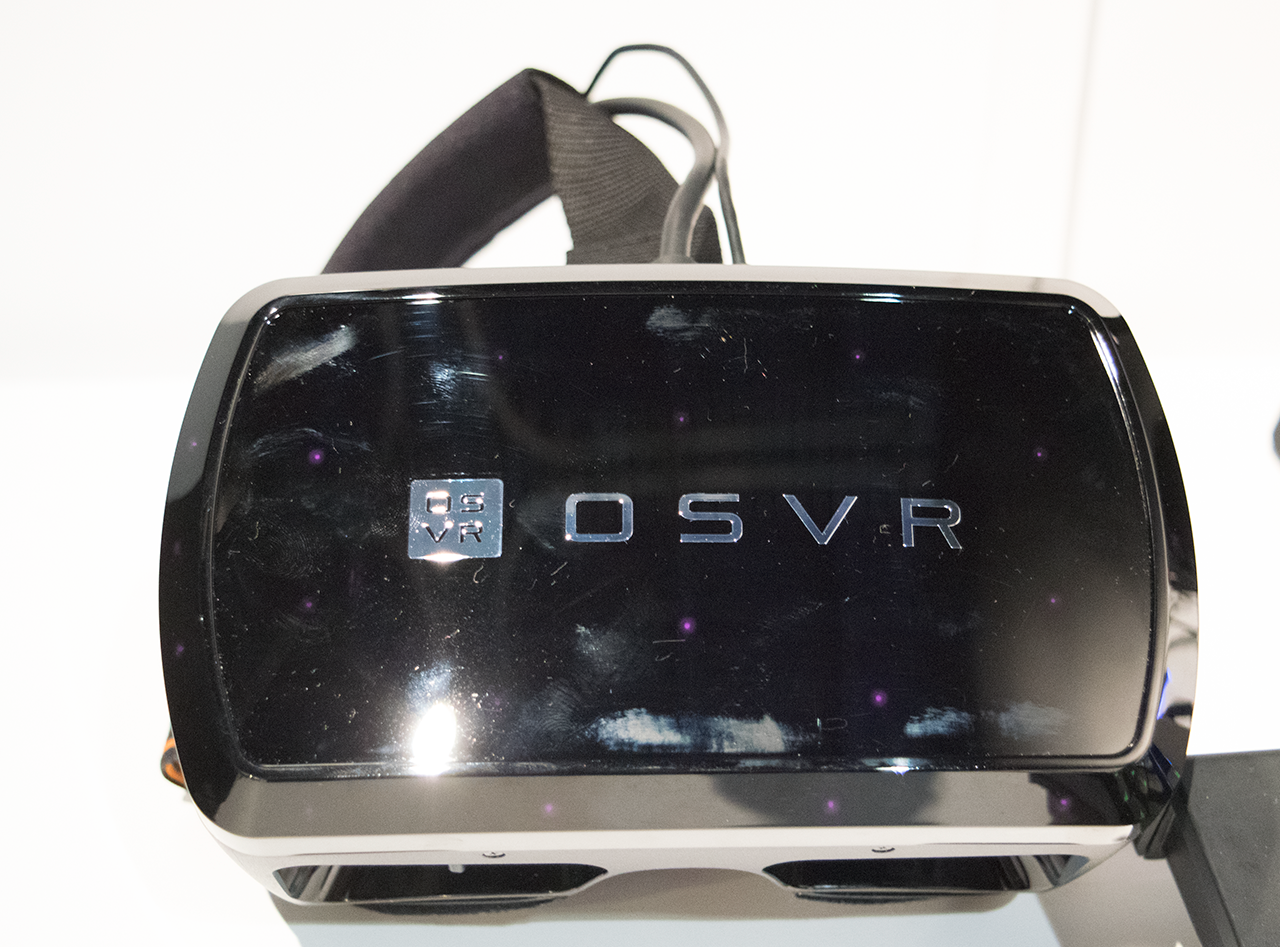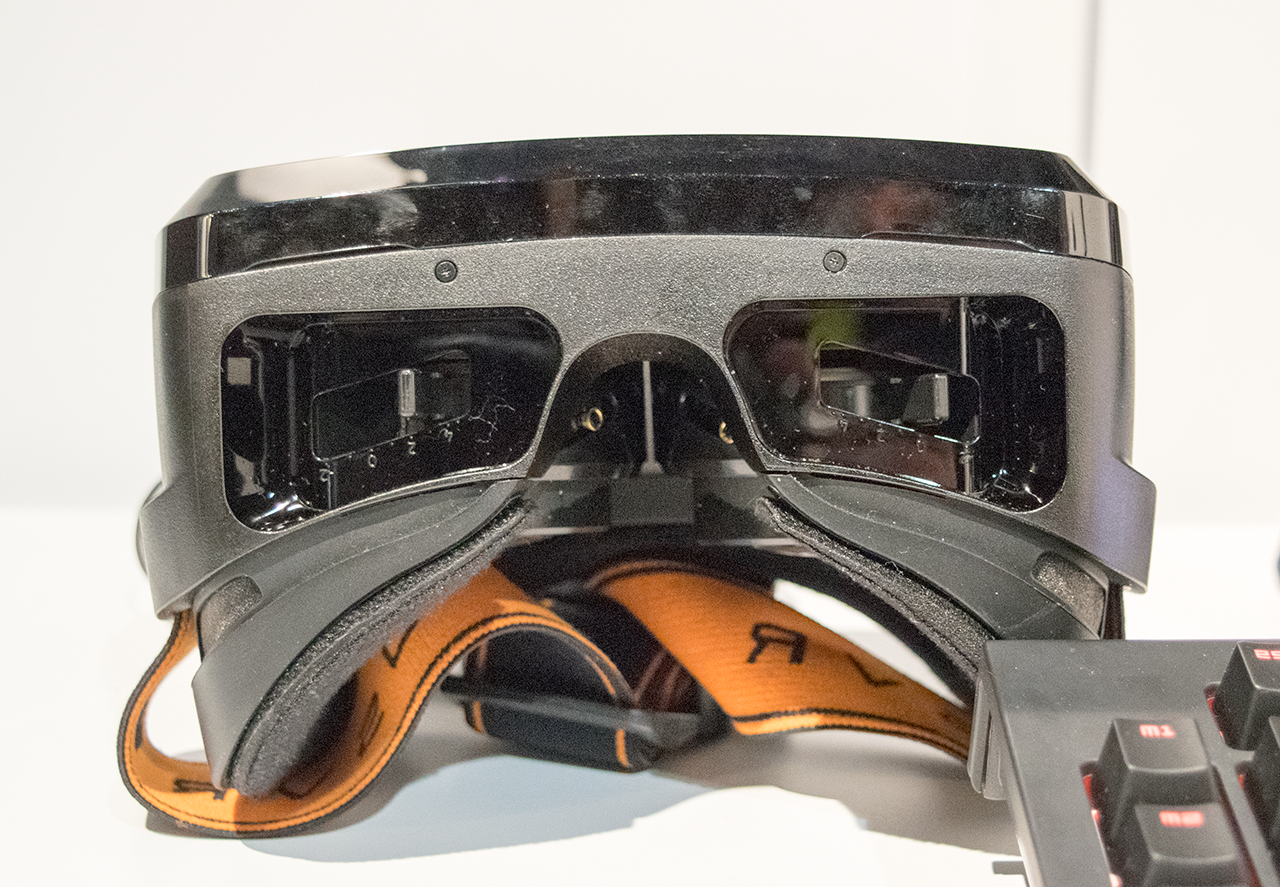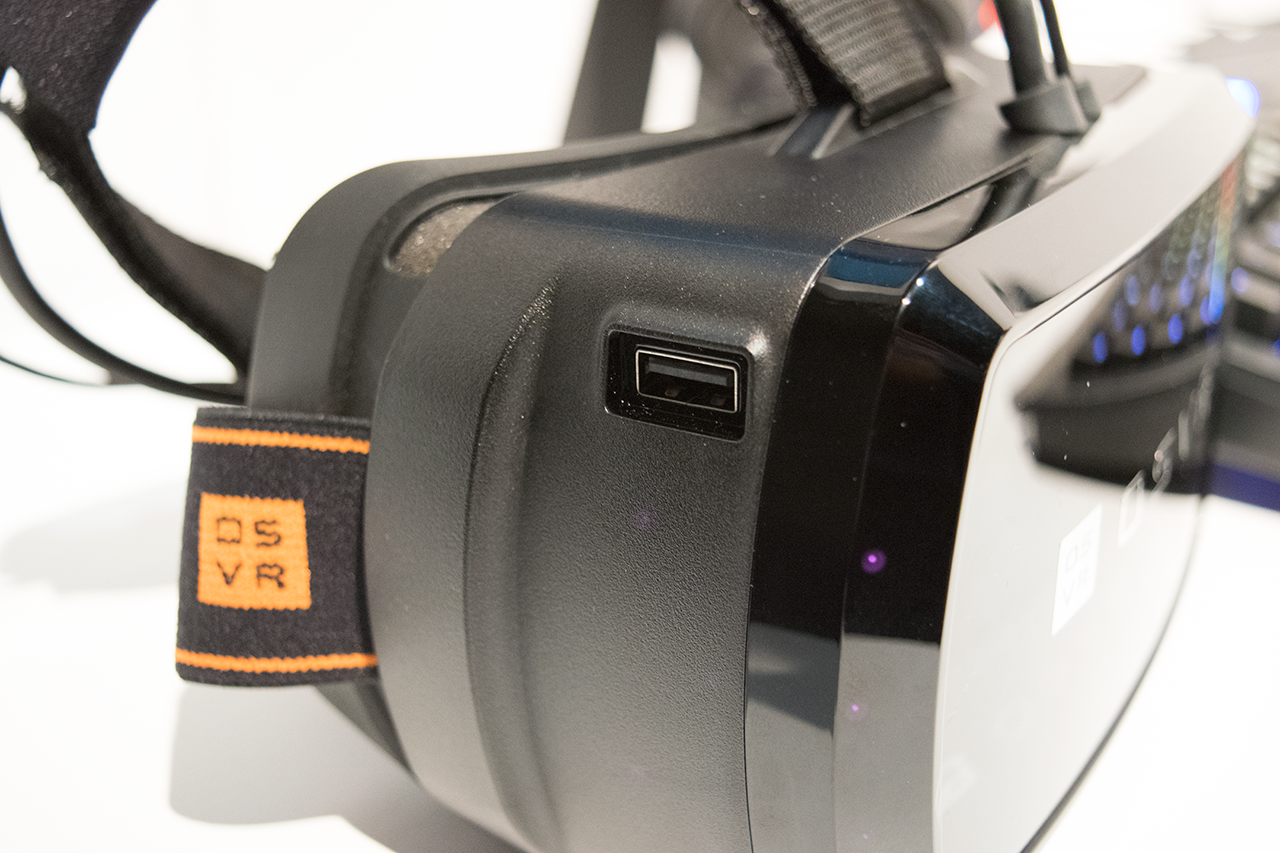OSVR Is A Cheaper Alternative For PC Connected VR, Available Now, If You Can Hack It
Oculus launched the pre-orders for its upcoming Rift a little over a week ago, and the price that it is selling for has caught a number of people off guard. If the $599 entry point for an Oculus Rift is too much to swallow, you can still get into VR in the first generation. The Open Source Virtual Reality (OSVR) Hacker Developer kit is readily available, and you can pick one up for half the cost of an Oculus Rift.
For $299.99, anyone can order an OSVR Hacker Developer Kit 1.3, which includes everything you need to get started with virtual reality (er, other than a PC). For this price, you get the headset, which includes a 5.5-inch Full HD OLED display and adjustable optics for a clear view, and an infrared tracking system, which tracks your headset position in three dimensional space. The headset includes a removable face gasket made of a soft touch foam, and the head strap is made of thick stretchy fabric, somewhat reminiscent of a ski mask strap.
As they say, you get what you pay for
The OSVR headset is certainly a better experience than an Oculus Rift DK2, but there is a reason that the retail Rift costs twice the price. The OSVR HMD includes an OLED display, which is a significant improvement over the screen found in Oculus’s developer kits, but the resolution is still limited to Full HD, which will put some people off from adopting this option.
Tom's Hardware was given the chance to try out the OSVR headset at CES last week. The demo that they showed us was Epic Showdown, a passive bullet time experience. We've tried this demo out on Oculus's development kit, and we can say from experience that the screen in OSVR's HMD is, in fact, an improvement.
OSVR’s headset doesn’t include any kind of speakers, either, so you’ll have to source your own, although this likely isn’t a problem for many gamers. The OSVR HDK also has no controller, which should be considered against the price, as most compatible VR games will likely require a gamepad.
Adjustable Lenses
The OSVR HDK does offer a few features that even the retail version of the Oculus Rift omits, though. The bottom of the HMD includes two independent lens adjustments. The Rift headset doesn’t actually let you adjust the lens positions. OSVR’s headset lets you adjust one eye at a time, which could be a big plus for people with unequal eyesight.
For people with preconceived ideas of the ideal VR experience, the lower resolution may not be what you're looking for, but it will certainly lower the barrier of entry for many people. Including a 1080p panel not only makes the HMD cheaper to produce than the Rift, you can also run the games on lower-end hardware. The caveat is the refresh rate; OSVR’s display operates at 60 Hz, but 90 Hz is widely considered the minimum refresh rate to mitigate motion sickness for many people.
Get Tom's Hardware's best news and in-depth reviews, straight to your inbox.
Future Upgrades
OSVR’s HMD is designed to be upgraded over time, which is the reason it is called the Hacker Development Kit. If you have the skill and willingness to take it apart, the OSVR HDM can but upgraded with different modules. There will be a faceplate that integrates Leap Motion’s hand tracking cameras, and (eventually) it's possible that you can get better display with higher refresh rates.
OSVR’s main goal is the create an open standard for virtual reality developers, and the group has hundreds of member companies working together towards that goal. The OSVR HDK isn’t really a consumer product, but it will offer eager early adopters with not-so-deep pockets the chance to get into VR now, with a large ecosystem of support that will be producing content and improving the standards behind the headset in the future.
If VR is something you can’t live without, but you just don’t have $599 lying around for an Oculus Rift, an OSVR HMD will definitely satisfy your VR craving for the time being. You can order an OSVR Hacker Developer Kit 1.3 from Razer’s website for $299.99, but understand that if you do, you aren’t buying a consumer device.
Follow Kevin Carbotte @pumcypuhoy. Follow us on Facebook, Google+, RSS, Twitter and YouTube
Kevin Carbotte is a contributing writer for Tom's Hardware who primarily covers VR and AR hardware. He has been writing for us for more than four years.
-
toddybody Seems like a poor use of money...buying into some unknown headset with non standard (resolution and refresh rate of Rift/Vive) specs. I'd worry that not only would Rift/Vive titles be incompatible (ergo losing the vast majority of VRs library), but that it's 60hz refresh rate and sub par tracking would make them $300.00 "puke goggles"Reply -
DrakeFS This is a Dev Kit (per razors site), the consumer version will probably be more inline with Rift\Vive specs. I am a bit wary of suggesting consumers purchase Dev Kits that may not be supported once the retail version goes live.Reply -
kyle382 I really like the idea of buying a modular kit like this for a cheaper entry price. The 60hz thing seems like a deal breaker, but I have not tried it personally.Reply -
kcarbotte Reply17321421 said:I really like the idea of buying a modular kit like this for a cheaper entry price. The 60hz thing seems like a deal breaker, but I have not tried it personally.
If you suffer from motion sickness than its probably not for you.
I didn't have a problem with it myself though. -
purifol This is a pretty ridiculous article, for a start the OSVR dev kit screen spec is worse than an Rift DK2, 60hz vs the far smoother 75hz and no competition to 90hz of the CV1. The writer suggests the screen is better because it is OLED, but so is the DK2 and the CV1 hasn't had any proper reviews yet. But the main issue is that their is far more content available for the DK2 and that means the CV1 will be well supported by modders getting everything to work with it.Reply -
Wrun__ Screen operates at 120Hz. Please read up before posting.Reply
Edit: The lack of understanding the difference of fps and Hz in the article/comments is baffling. -
assassin445522 i honestly think VR wont be that big unless a movement inside the game without moving your physical body was possibleReply -
i think this OSVR going to the right direction using leap motion, let's hope they do it right, really disappointed by that selling out bastards at oculus, hope they rot in hellReply
-
EstebanGomez Man do people not know how to read? The display is 120hz, not 60 hz. Also no mention of the screen diffusion film either? Which basically removes the screen door effect.Reply -
thed00d You guys at tom's Hardware got something wrong. even though the OSVR is indeed designed to run on 60FPS; since the 1.3 Upgrade the display runs in 120Hz (as it says in the official news-post regarding the 1.3 Upgrade in October: "The display module has been upgraded to a FULL HD 5.5” 120hz silver screen OLED display for low persistence for clearer and brighter images running at 60fps.")Reply
To make this clear: the Rift runs in only 90Hz, the OSVR got a higher refresh rate. no motion sickness on this device.


